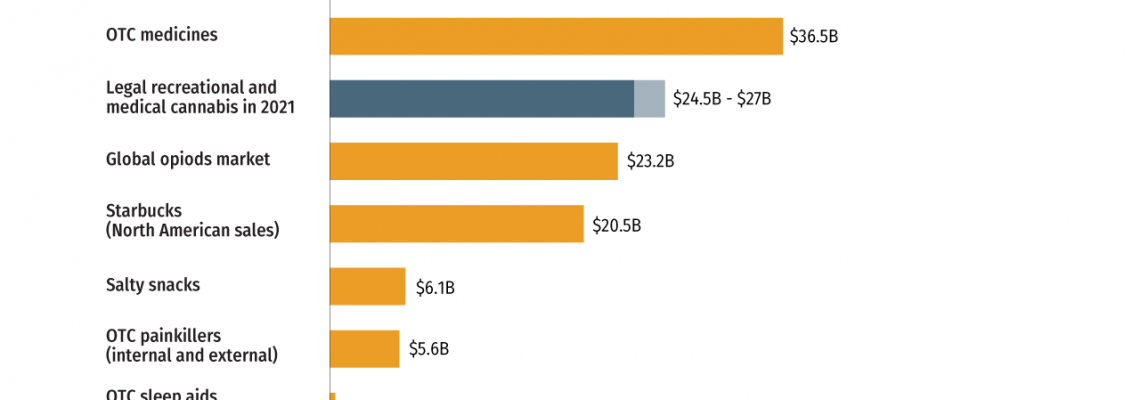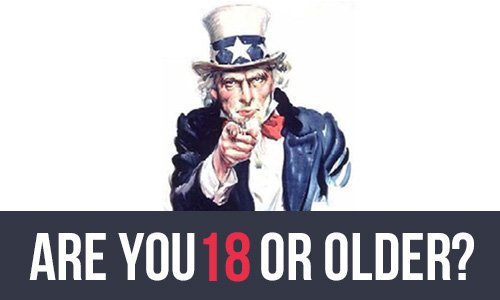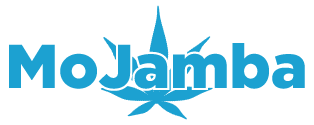
Starbucks Coffee findet man in den USA sprichwörtlich an jeder
Ecke.
Der Markenname der noblen Kaffeerösterei lädt dabei förmlich zur Verballhornung ein. Aus Starbucks wurde Starbuds, ein trefflicher Name welcher gerne von Dispensaries, Head- und Growshops benutzt wird. Kaffee & Cannabis passen halt irgendwie gut zusammen, sind es doch beides psychotrope Gewächse von außerordentlicher Beliebtheit. Daher ist der direkte Vergleich dieser Branchen auch irgendwie naheliegend.
So berichtet die Website mjbizdaily.com, mit Verweis auf die 2022er Ausgabe des MJBiz Factbook, dass der Erfolg des hippen Kaffee-Giganten inzwischen von den Cannabis Verkaufszahlen der US-Amerikanischen „Legal States“ deutlich in den Schatten gestellt wird.
Demnach fallen die Umsätze mit dem grünen Gold, mit immerhin gut einem Drittel Vorsprung gegenüber dem kultigen Kaffeehändler, deutlich höher aus als dessen Verkäufe im gesamten nordamerikanischen Raum. Und dies ungeachtet der Tatsache das Starbucks seine hochpreisigen Produkte in allen 50 Bundestaaten frei und uneingeschränkt verkaufen kann, während Cannabis nur in 39 Bundesstaaten, sowie dem Distrikt Columbia legalisiert und nur unter, vergleichsweise strengen Auflagen frei verkäuflich ist.
Auch beim Wachstumstempo von 2021 bis 2022 hat Cannabis klar
die Nase vorn:
Während Starbucks seine Einnahmen im Geschäftsjahr 2021 um 25%
steigern konnte, sind die Verkäufe der Cannabis Industrie im gleichen Zeitraum
um stolze 30% gestiegen und lassen den Kaffeehausbetreiber daneben ganz schön alt aussehen.
Doch auch weniger scherzhafte Vergleiche entscheidet der
Cannabismarkt klar für sich. Denn die Menschen konsumieren Cannabis aus
unterschiedlichsten Gründen und jeder einzelne dieser Gründe tangiert wiederum ganz
eigene Märkte.
Die Consumer HealthcareProducts Association gibt an, dass die Verkaufszahlen von freiverkäuflichen
Schlafmitteln in den USA im Jahr 2021 lediglich eine Wachstumsrate von gerade
einmal 1% verzeichnen konnte. Kein Wunder, zumal doch der schlaffördernde Effekt von Cannabis einen der am häufigsten genannten Konsumgründe darstellt.
Die sich zunehmend verbreitende Erkenntnis der schmerzlindernden Wirkung von Cannabis führte dazu, dass auch der Umsatz frei verkäuflicher Schmerzmittel, mit gerade einmal 5% Wachstum im Jahr 2021, deutlich hinter dem guten Kraut zurücklag.
Sicherlich ist dieser immense Sprung von 30% nicht allein auf den medizinischen Anwendungsbereich zurückzuführen. Auch der so genannte Freizeitkonsum trägt einen, sicherlich nicht ganz unerheblichen Anteil dazu bei. Denn besonders während der Pandemie sind wohl viele Menschen alten, tendenziell vermeintlich aussterbenden Lastern verfallen und haben den Konsum auf die Spitze getrieben. Dies lassen auch die Umsätze der US Tabakindustrie vermuten, welche laut der Statistik-Plattform Statista im Jahr 2021 erstmals seit zwanzig Jahren wieder einen starken Zuwachs an verkauften Zigaretten verbuchen konnte.
Unabhängig davon gehen aktuelle Schätzungen davon aus, dass die legale Cannabiswirtschaft der USA insgesamt sogar noch etwas größer ist, als der weltweite Markt für Opiate. Die Datenlage über die legalen Verkäufe von Opiaten zeigt jedenfalls ein deutlich verlangsamtes Wachstum während der Covid-19 Pandemie. Dies ist sicherlich auf einen erschwerten Zugang zu Krankenhäusern in der Corona Hochphase zurückzuführen wie mJBizdaily.com in dem Artikel schreibt. Zugleich haben diese Umstände den Wachstumskurs der legalen Cannabis Wirtschaft aber sicherlich noch einmal zusätzlich beflügelt.In unseren deutschen Gefilden hat der Starbucks Umsatz, gegenüber dem legalen Markt für (medizinisches-) Cannabis derzeit sicher noch die Nase vorn. Doch wenn die Ampel Koalition vielleicht bald endlich mal Nägel mit legalisierten Köpfen machen würde, könnten Paracetamol und geröstete Kaffeebohnen durchaus auch hierzulande zu einem Dasein im Schatten mächtiger Hanfpflanzen verdammt werden.


Kommentieren